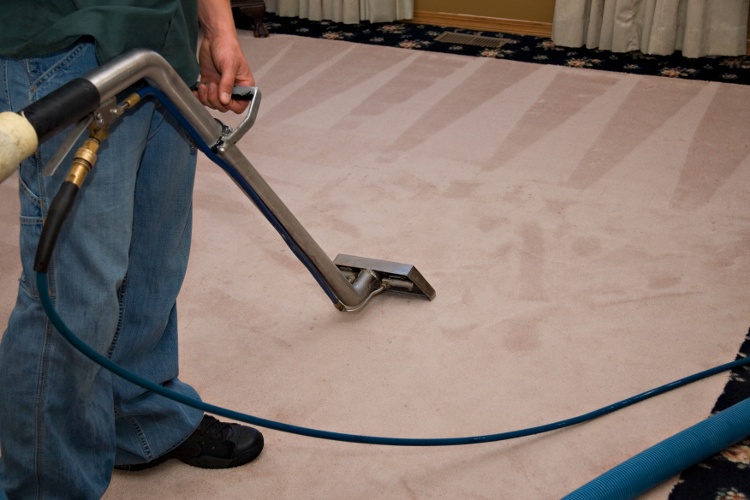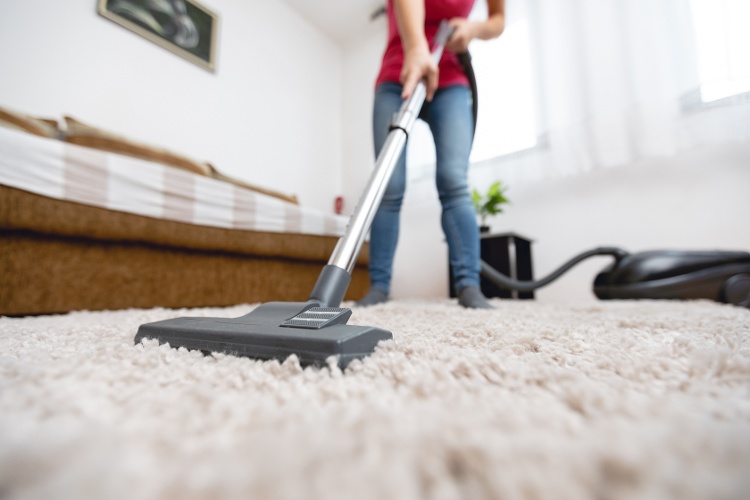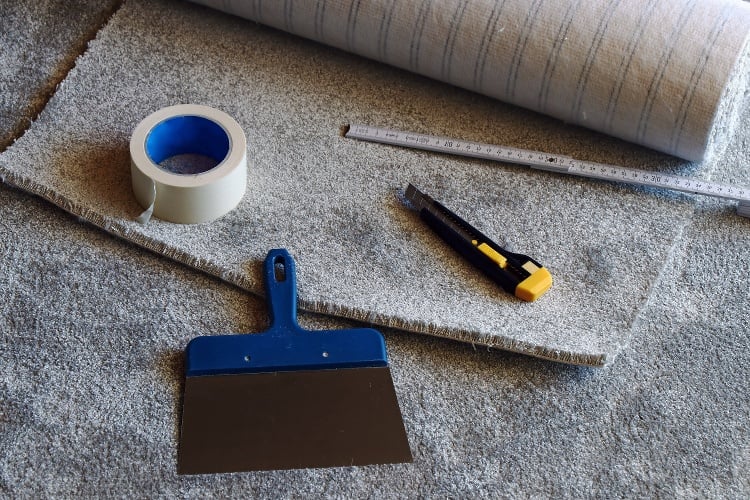Carpet in a rental property is a high-maintenance item, and a carpet that looks worn-out can be one of the biggest reasons for a tenant not renting or renewing the lease.
Even with the best of tenants, carpet will eventually wear out due to age and normal wear and tear. Fortunately, there are things a landlord can do to extend the average life of a carpet in a rental property to keep the tenant happy and expenses low.
In this article, we’ll explain how normal wear and tear works, discuss how to charge a tenant for carpet damage, and give you some tips on how to extend the average life of a carpet in a rental property.
Normal Carpet Wear and Tear in Rentals
In order to predict the average life of a carpet in a rental property, it’s important to understand the concept of “normal wear and tear.”
When you think about it, normal wear and tear is all around us. Clothing wears out after being worn and washed a certain number of times, cars and appliances eventually break down and need to be replaced, and pets and people wear out as well. In other words, these items and things all have an average or “useful life.”
By the same token, the carpet in a rental property isn’t going to last forever. Instead, it will wear out after a certain amount of time due to normal wear and tear from tenants walking on the carpet, and vacuuming the carpet to keep it clean.
A professional carpet cleaner can help a landlord to distinguish between normal carpet wear and tear and excessive damage. In general:
- Carpet worn out in high-traffic areas such as the entryway or hallway is normal wear and tear.
- Worn-out carpeting due to aging is also due to normal wear and tear.
- Fading carpet due to constant exposure to the sun is also an indication of normal wear and tear.
On the other hand, indications that a carpet has excessive damage due to abuse or negligence include irremovable stains from spills or pets, carpet tears in areas that are not high-traffic, and burns from candles, cigarettes, or an unscreened fireplace.

Average Life Expectancy of Carpet
Carpet in a rental property has an average life expectancy of five years, according to HUD (page 57). A carpet manufacturer will also assign a life expectancy rating to the different styles and types of carpet made.
Of course, carpet may last longer or less than five years, depending on the quality of the carpeting, how often it is cleaned, and the number of people living in the house, and whether or not the property is pet-friendly.
By knowing what the average life expectancy of a carpet is, landlords can more accurately budget for future replacement, and also know if and how much to charge a tenant for carpet damage.
How Much Can a Landlord Charge for Carpet Damage?
A landlord may be able to charge a tenant for carpet damage beyond normal wear and tear. Signs of damaged include:
- Permanent stains from beverage spills or pet urine.
- Rips or tears in areas of the carpet not located in high-traffic areas.
- Burns from fallen candles or forgotten cigarettes.

Example of Calculating Carpet Damage Charge
Now let’s look at an example of how to calculate the charge to a tenant for replacing a carpet due to damage caused by the tenant using the following facts:
- Carpet in the living room was brand new when the tenant moved in.
- Original cost of carpeting in the living room was $900.
- Carpet has a useful life of 5 years.
- There are 3 years of useful life remaining when the tenant moves out.
- Entire living room carpet needs to be replaced due to tenant damages beyond normal wear and tear.
In this scenario, the tenant would be charged $540 for its share of the carpet replacement.
This is calculated by taking the original $900 cost of the carpet, dividing by 5 years of useful life, then multiplying by the 3 years of useful life remaining on the carpet (had the tenant not irreparably damaged it):
- $900 original carpet cost / 5 years = $180 per year x 3 years remaining useful life = $540
Oftentimes, landlords will deduct these repair/replacement costs that live outside of normal wear and tear from the tenant’s security deposit.
How to Depreciate a Carpet in a Rental
The reason the tenant is not charged for the entire replacement cost of the carpet in the above example is because the carpet has been partially depreciated by the landlord. In other words, because of depreciation expense for the carpet taken by the landlord, the tenant can only charge the tenant a pro-rata share for replacing the damaged carpet.
According to IRS Publication 527 Residential Rental Property, carpets, furniture, and appliances used in a rental property must be depreciated over 5 years, using the general straight-line depreciation system. Depreciation is a non-cash expense that rental property investors can use to reduce taxable net income.
If the cost of the living room carpet was $900, a rental property owner could deduct $180 each year from the property’s pre-tax income.
But as Nolo.com points out, depreciating a carpet may not be as simple as it seems. If the carpet is tacked down – as most carpets are today – the depreciation period is 5 years. But if the carpet is glued down, the carpet must be depreciated as it was part of the house.
In addition to depreciating property used in a rental activity such as carpeting and appliances, real estate investors can also depreciate the house itself.
The IRS assigns residential rental property a useful life of 27.5 years. That means that real estate investors can claim an annual depreciation expense of 3.636% of the property value (excluding the land value) as a deduction to reduce taxable income.

Tips to Make Carpet Last Longer
The cost to install or replace 1,000 square feet of carpeting ranges from $1,800 to $7,500 depending on the real estate market the rental property is located in. With expenses like these, it makes good business sense to make the carpet last as long as possible, while still keeping the rental property attractive to tenants.
Rental Grade vs Top-Grade Carpet
Rental grade carpet normally used in rental properties generally has a useful life of 5 years. Top-grade carpets used in many owner-occupied homes costs more, but also lasts longer and comes with lifetime warranties against staining and wear.
Investors should weigh the pros and cons of spending more money on carpet up front in exchange for less frequent carpet replacement and a bigger annual carpet depreciation expense.
You can also consider upgrading to vinyl plank or laminate, which can be more durable and last longer.
Keep Dirt Where it Belongs
Ask the tenant to use rugs or mats in high traffic areas to keep dirt from coming inside the house. Choose a mat that is textured and sturdy enough to pull dirt from the bottom of shoes.
Giving the tenant a gift card to pay for a rug at the local Home Depot or home decor store is also a nice thank you gift to offer the tenant when they move in, and to help your carpet last longer.
Air Filter and Duct Cleaning
Dust and bacteria that build up in the HVAC system eventually find their way into the carpet. Make sure the air filters are changed every 1-3 months, depending on the part of the country your rental property is located in.
Also, ask the company that services your heating and air conditioning system how often your home’s vents and air ducts should be cleaned, then include it in your semi-annual maintenance schedule.

Vacuum Once a Week
Consider adding a cleaning addendum or clause to the rental agreement that requires the tenant to vacuum the carpet and clean the floors at least once a week. Realistically, a landlord isn’t going to inspect the property weekly.
But by setting the right expectations when the tenant moves in, you can put part of the responsibility on the tenant to help make the carpet last much longer.
Spot Clean
During routine interior inspections look for areas of the carpet that need to be spot cleaned. If a stain stays on the carpet for a long period of time the spot will oxidize into a permanent stain. Check your carpet warranty to see if a spot removal chart is included.
A spotting chart will list the various substances that stain a carpet along with the best way to remove them. The Carpet and Rug Institute website (CRI) is another good resource to use for learning how to make a carpet in a rental property last longer.
Professionally Clean
Carpet warranties usually require the carpet to be professionally cleaned every 18 – 24 months in order for the warranty to remain valid, similar to changing the oil in your car. As a landlord, you should always clean the carpet in a rental unit prior to a new tenant moving in.
Professional carpet cleaning can also be used as a perk when a tenant renews the lease, especially if the market rent is increasing. The best carpet cleaning companies use chemicals that are safe for people and pets, and the carpet dries in hours instead of days.
Final Thoughts on This Topic
Taking a proactive approach to cleaning the carpet in your rental property, and replacing it when necessary, is a key way to find and keep great tenants renting year after year.
Although the average useful life of a carpet is about five years, there are several things a landlord can do to extend the life of a rental property carpet while still keeping the home very attractive to tenants.









